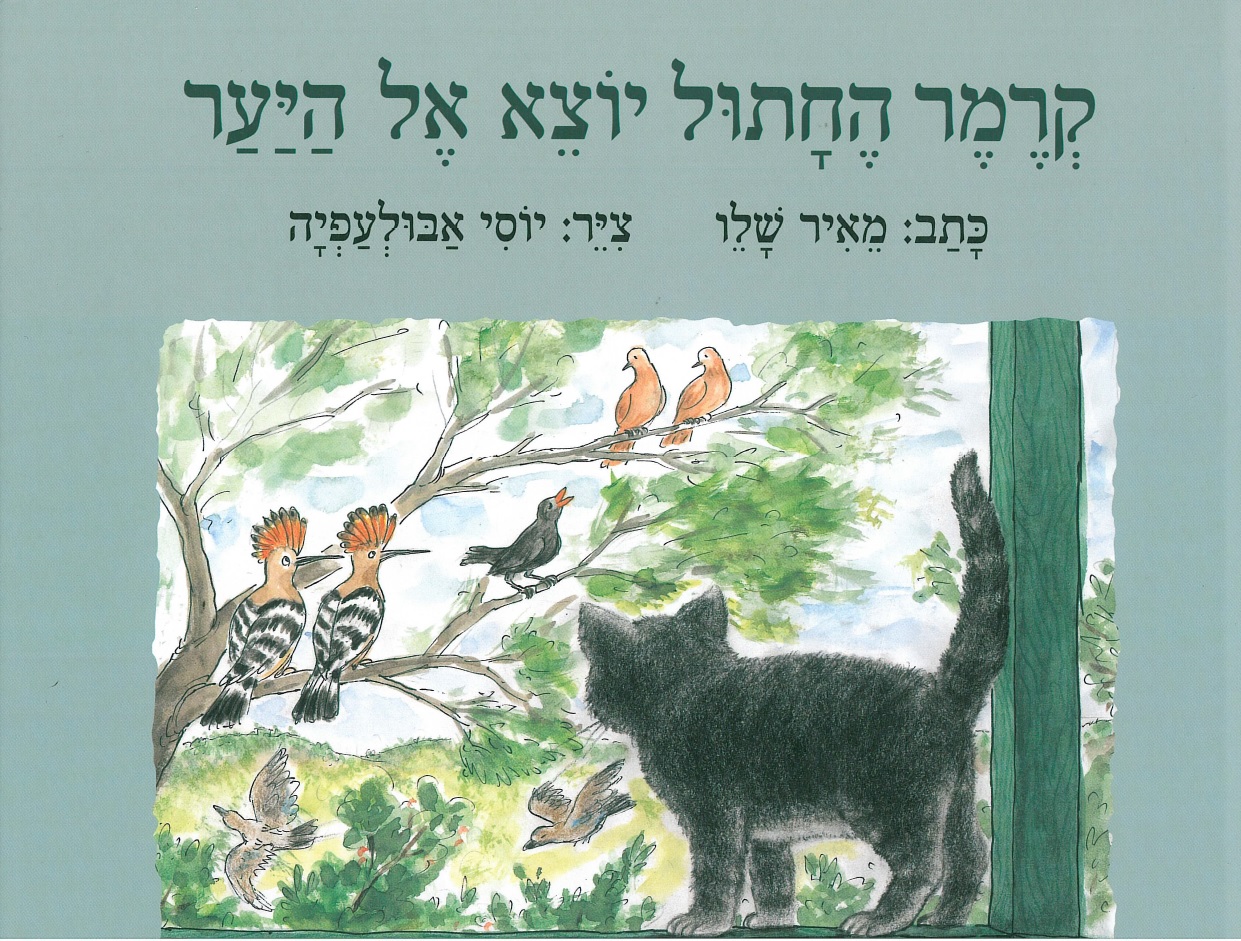קרמר החתול יוצא אל היער
כתב: מאיר שלו|איורים: יוסי אבולעפיה
תרגום לרוסית של ההצעות להורים המודפסות בדפים האחרונים של הספר
Кот Кремер уходит в лес
Меир Шалев
Иллюстрации: ЙосиАбулафия
Как вместе играть, чтобы всем было хорошо? Когда друзья котенка Кремера отказываются играть с ним в кошачьи игры, он царапается, кусается и убегает в лес. Но ой-ой-ой, кого он встречает в темном лесу? На помощь ему в лес приходят его друзья и дают ему важный урок дружбы, прощения и возможности исправиться.
Не делай другому того, что ненавистно тебе (Вавилонский Талмуд, Шаббат 31(
Встреча с большими лесными зверями показала Кремеру, как чувствовали себя его маленькие друзья, когда пытались играть с ним в кошачьи игры.
В Талмуде рассказывается, что когда старца Гиллелянееврей попросил изложить всю Тору, пока он устоит на одной ноге, Гиллель выбрал важный урок "Не делай другому того, что ненавистно тебе. Это вся Тора. Остальное – комментарии. Иди и учись".
Каждый из нас иногда не уверен, как вести себя по отношению к другим. Гиллель учит нас, как это делать: подумать, как бы мы хотели, чтобы вели себя по отношению к нам, и что нам доставляет неприятности и огорчения . Так мы узнаем, как правильно относиться к другим: точно так же, как мы хотели бы, чтобы относились к нам.
Занятия в кругу семьи
- Все началось с непонимания и обиды: "Вот увидите, что сейчас будет!" Прочитав рассказ, можно поговорить о хороших намерениях и непонимании между друзьями и рассказать детям о чем-нибудь, что случилось с вами.
- Подобно котенку Кремеру каждый из нас чувствует себя иногда большим, иногда маленьким. Можно спросить детей, когда они чувствуют себя большими, а когда маленькими, и в чем преимущество быть большим или маленьким.
- "Царапки, покусывания, прыжки и выгибания" – так писатель Меир Шалев описывает кошачьи игры. Можно полистать книжку, выбрать другое животное и показать движениями игры этого животного.
- Кремер очень испугался больших зверей, которых он встретил в лесу. Можно поговорить с детьми об осторожности, о страхах и о том, как их преодолеть.
- Друзья Кремера дают ему важный урок дружбы: хороший друг должен уметь прощать и просить прощения. Найдите в книжке картинку, на которой друзья Кремера находят его в лесу, рассмотрите ее и обсудите, с какими чувствами они на него смотрят.
- На иллюстрациях ЙосиАбулафия есть много животных. Некоторые из них дикие, а некоторые домашние. Знают ли ваши дети названия всех этих животных? Можно ли рядом с домом увидеть некоторых из них? Можно выйти на прогулку. Какие животные, большие или маленькие, встретились вам по дороге?
- Можно разыграть маленький спектакль по рассказу с помощью игрушек. Дайте детям выбрать игрушку, которая будет Кремером, и кто будут его друзья по двору и лесные звери. Животные могут радоваться и пугать, играть и ссориться – а в конце исправлять ошибки и извиняться.
- В конце книжки можно рассмотреть картинку, на которой Кремер спит в своей корзинке, выбрать куклу и уложить ее спать с какой-нибудь книжкой из "Пижамной библиотечки".
Желаем вам приятного чтения и интересной беседы!





